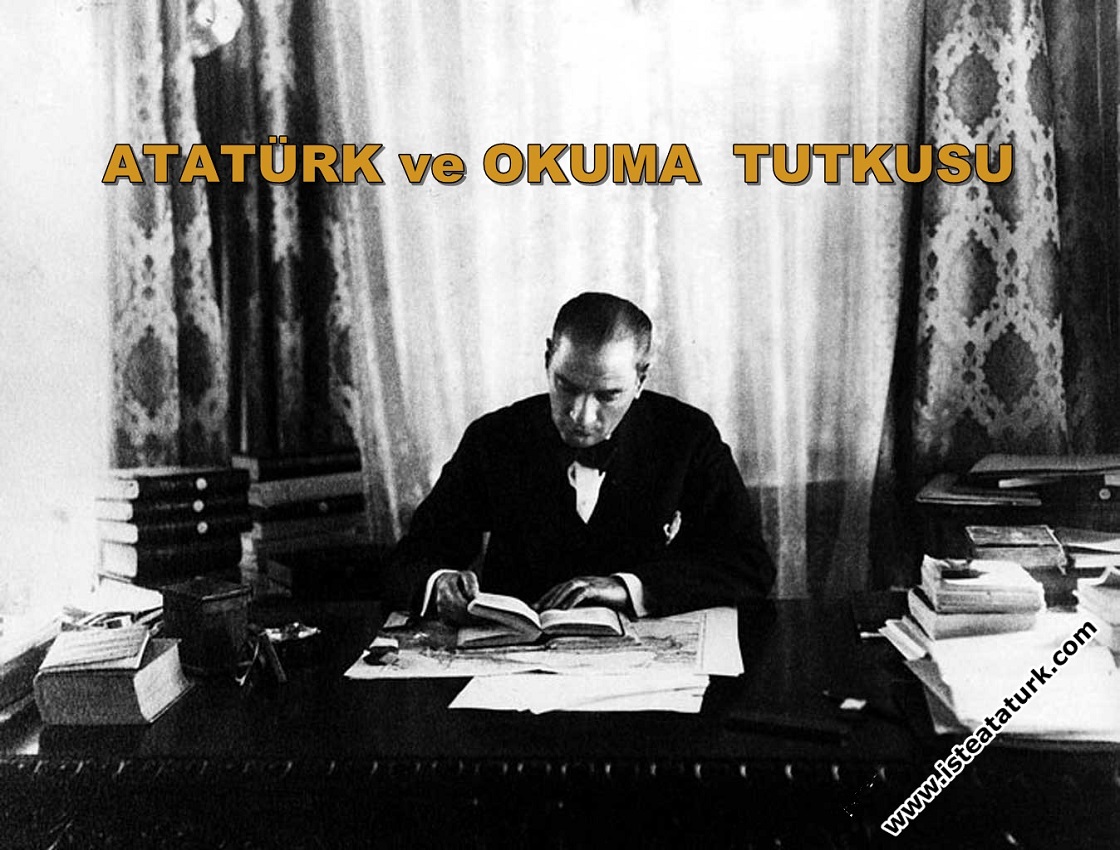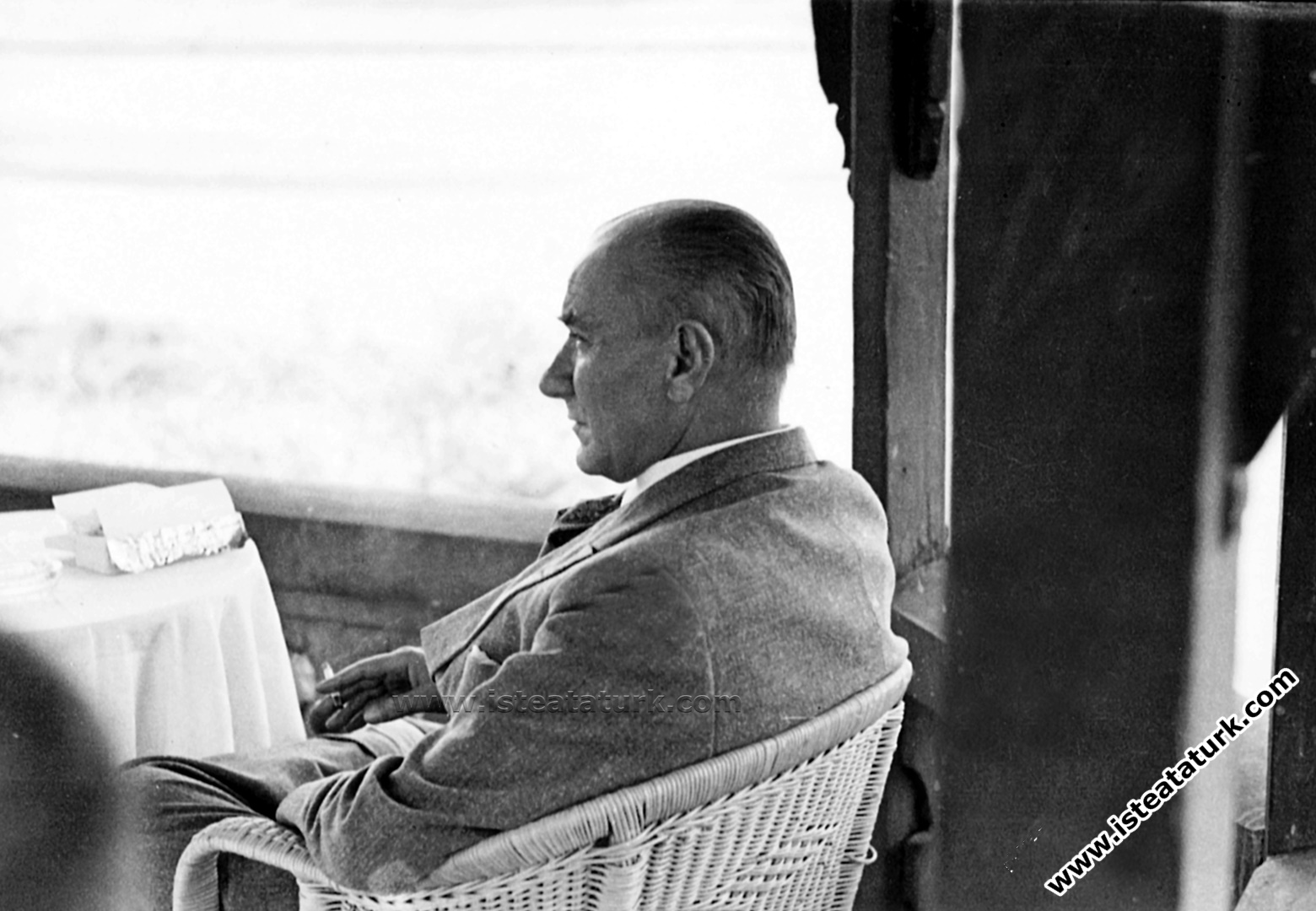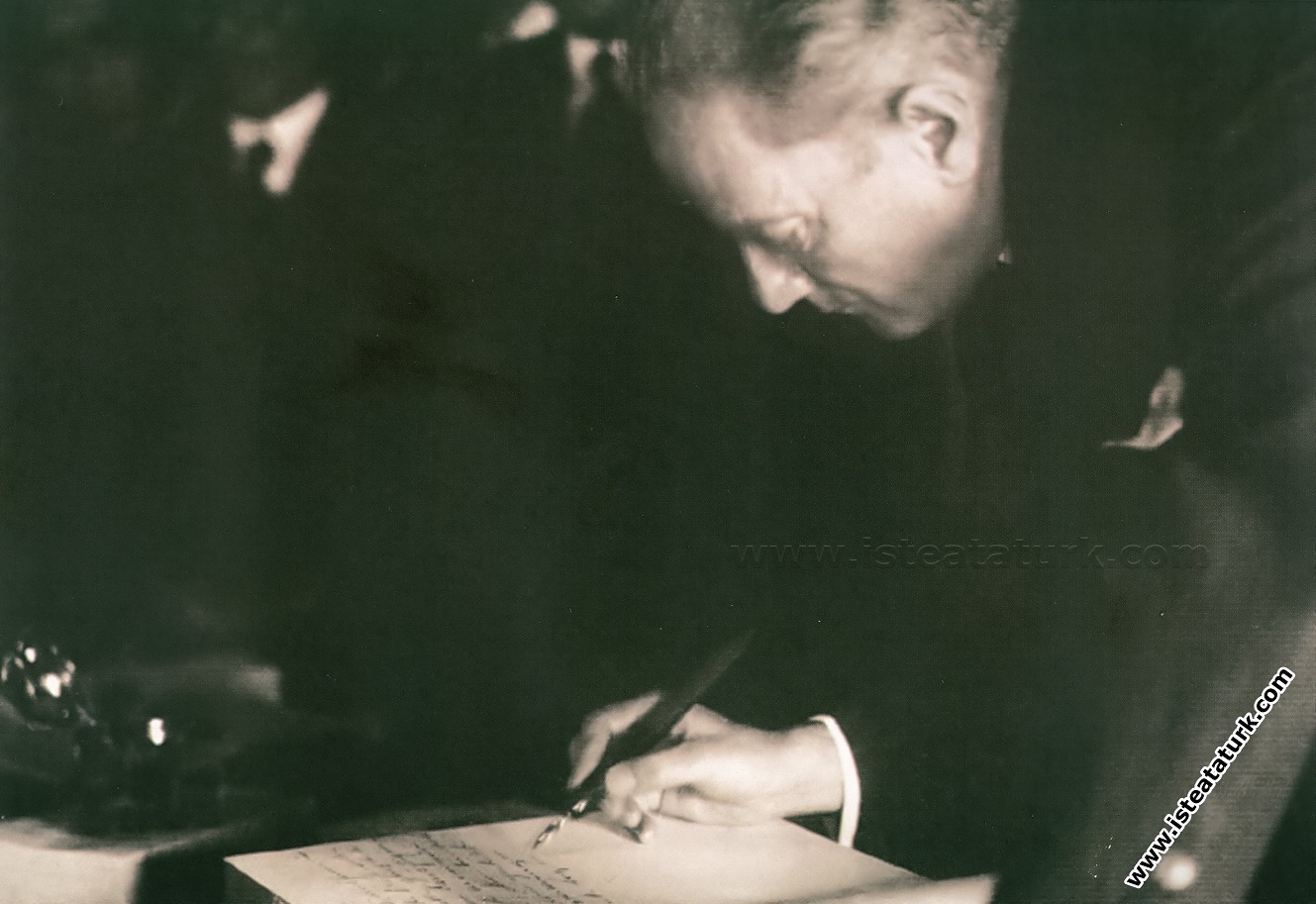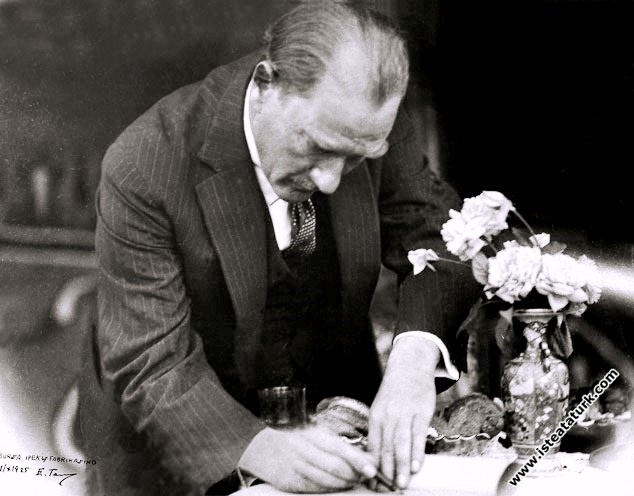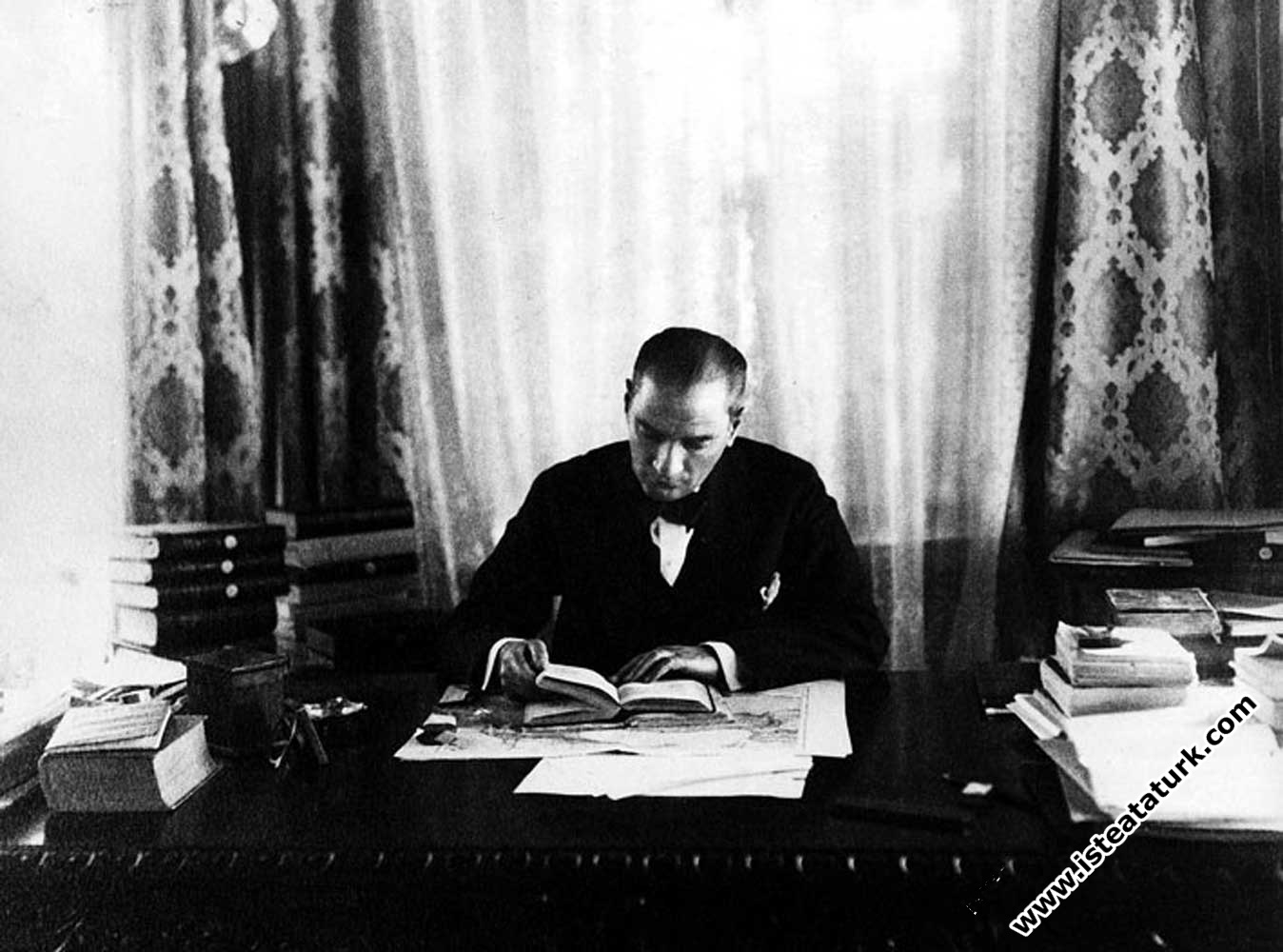Atatürk, Populism and Democracy
Character Size
Atatürk, Populism and Democracy
Atatürk, Populism and Democracy
The two major legacies that Atatürk bequeathed to modern Turkey are a secure sense of national identity and a commitment to populism —a commitment that allowed the Turkish people to make a gradual and peaceful transition from traditional autocracy to modern democracy in only two generations. This achievement is the more remarkable if it is viewed in the appropriate perspectives of history and geography.
When Mustafa Kemal Pasha assumed his political leadership in 1919, the Ottoman Empire had suffered its final military collapse— along with the German Empire of the Hohenzollerns, the Austrian Empire of the Habsburgs, and the Russian Empire of the Czars. In the complex process of reorganization that followed, national independence was proclaimed in most parts of Southeastern Europe, the Middle East, the Caucasus, and Central Asia. But the actual sequel typically was either outright colonial rule (Caucasus; Central Asia; the Middle East until the 1950s), or a precarious independence in the shadow of one or more imperial powers (the Balkans between the World Wars and the Middle East since; and Germany and Austria under the post-World-War-Two regimes of occupation). Turkey alone has preserved its national independence within the boundaries proclaimed in Atatürk’s National Pact (Misak-ı Millî) and avoided foreign occupation or involvement in war.
Kemal Atatürk’s achievement is just as remarkable if it is viewed from the perspective of what in recent decades has been called the Third (or post-colonial) world. Turkey is one of the few countries of Asia-Africa that never became a European colony. Yet, whereas most Asian and African countries after the Second World War became independent by default, because of the exhaustion of their erstwhile colonial rulers, Turkey did have to fight for its political independence. Its war of independence -fought to maintain independence rather than newly establish it- may be considered this century’s first successful war of national liberation.
The forms of government that ensued upon the collapse of empires after 1917/18 were mostly authoritarian (Balkans, Middle East) or even totalitarian (Russia 1917, Germany 1933-45, Iran 1979)’ with democracy either precarious or recent (Germany 1919-33 and its western parts since 1948; Czechoslovakia 1919-38; Israel since 1948; Greece since 1967). And in the Third World, democracy is only emerging in a few countries, often after a belated and violent struggle (e.g. Peru, Argentina, Brazil, Philippines, South Korea). In Turkey alone has there been a continuing trend from benevolent party dictatorship (1923-45) toward full democracy-with military interventions (1960-61, 1971-73, 1980-83) serving to restore and promote this democratic evolution, rather than to thwart or suppress it.
The close connection between nationalism and populism was central to Atatiirk’s political thinking. Perhaps the most succinct expression of his position is found in the speech he gave on his first arrival in Ankara on December 28, 1919. The central statement of that speech clearly indicates the foreign policy realities that, to his mind, make nationalism imperative: “Today the nations of the whole vorld recognize only one sovereignty, national sovereignty.” A nation must “become concerned about its existence and its rights with its entire strength to secure its existence and independence. ... Therefore, within our organization the principle has been adopted that the national forces are supreme and that the national will is paramount”.
But nationalism means not only independence against foreign forces of conquest or imperial domination, but, above all, a common commitment that links the highest pashas at the top of the social hierarchy to the lowliest peasant in the pursuit of a single, common cause: “... we begin our work from the village and the neighborhood and from the people of the neighborhood, that is from the individual. If the individuals do not do their own thinking, the masses can be led in an arbitrary direction, can be led by anyone in good directions or in bad directions. To be able to save himself, every individual must become personally concerned with his destiny. A structure that in this way rises from below to the top, from the foundation to the roof, will surely be sturdy.”
A solid popular base for the national movement was not only an essential condition for victory in the war to preserve Turkey’s independence, it would also lay the essential basis for maintaining that independence in the future. When Mustafa Kemal Pasha first issued the call to rally the people against foreign invasion and partition, the nation was the flag to which the movement rallied: A “National Pact” was proclaimed in January 1920 to define its boundaries, and a “National Assembly” called to Ankara in March 1920 to give direction to its common struggle— even though there remained some ambiguity as to the identity (Turkish, Ottoman, or conceivably Muslim) of the newly-proclaimed nation. But as the national movement reaped its full victory with the Treaty of Lausanne, Mustafa Kemal Pasha prepared for the realities of peace by founding a People’s Party- stressing populism as his central ideological concept as distinct from the liberal democracy then espoused by imperialist powers such as Britain and France, or the socialism or communism proclaimed by the neighboring Soviet Union.
The very core of Kemal Atatürk’s populism was an evolutionary concept. The only “sturdy” and durable base for independence abroad and political stability at home (so he indicated in the speech already quoted) is for “every individual” in every “village and neighborhood” to “become personally concerned with his destiny.” But this vision of populism, of individual concern of every villager and city dweller with the common destiny, was not a mere slogan, let alone a vision of instant magic transformation.
Rather, that speech of 1919 emphasizes that, for any such vision to become reality, “there is need at the beginning of any undertaking to go not from below upward, but from above downward.” Atatürk therefore concludes this early programatic speech by expressing his gratification “that our national organization, which naturally began in this same way, has rached to its true point of origin, to the individual, and that from there the real structuring upward has also begun.” Yet he adds a word of caution: “... we cannot assert that any degree of perfection has been attained. Therefore, it must be considered a national and patriotic duty that we should make great efforts especially to attain the goal of a structuring from below upward.”
The passages just cited mark Kemal Atatürk as revolutionary in his aims: His movement set out to create a vigorous nation-state instead of the long decaying multinational Ottoman Empire, and he later was to espouse rapid and fundamental changes from traditional Islamic law to European legal codes, from Arabic letters to the Latin alphabet, from traditional Middle Eastern dress and music to their European equivalents.
Yet in his political method, Atatürk was a moderate who emphasized continuity and evolution. Within the decaying Ottoman empire, the military had been the most Westernized part of the ruling elite; and Mustafa Kemal himself had risen, on the basis of talent, merit, and devotion, to the very top of that military establishment. The historic effort of 1919-23 of maintaining the independence of Turkey within the boundaries of the 1918 armistice was one on which everyone —military and civilian, Turk or Ottoman, Muslim or secular, conservative or progressive— could readily agree. And after victory and proclamation of the Republic, he was to devote his further efforts to the task of communicating that Westernized culture of the Ottoman elite in an even more uncompromisingly Western form to the common citizens of the new Turkey.
Turkey’s political and cultural evolution since 1923 thus may be considered to have followed exactly the recipe prescribed in that speech of 1919. First organization was spread downward, through schooling, through People’s Houses and Village Institutes, and through an ever more comprehensive system of military conscription. Under Atatürk’s successor İsmet İnönü, there began the reverse process of “structuring upward,” first through greater liberalization of discussion and organization within the single Republican People’s Party and then through invitation to a competitive multiparty system, and most important, İnönü’s willingness to accept his own party’s electoral defeat in 1950 and to become leader of the opposition.
The next decades from 1950 to 1980 witnessed unprecedented expansion of education and economic infrastructure, growing mass participation in politics, and occasional outbursts of domestic violence. Once domestic tranquillity was restored by the military intervention of 1980, the spontaneous formation of new and vigorously supported political parties since 1983 and 1984 indicates that the “structuring from below upward” that Atatürk anticipated is by now irrevocable, and that “a structure that in this way rises from below to the top, from the foundation to the roof, will sure be sturdy”1.
Turkey’s vigorous and thriving democracy in the late twentieth century thus is the solid and happy outcome of the basic policies of nationalism and populism so vigorously espoused by Kemal Atatürk in the crucial period from 1919 to 1923.
Notice: This paper was presented at the 'International Atatürk Symposium' held in Ankara on September 21-23, 1987.
1 Atatürk’s speech of 28 December 1919 is reprinted in his Nutuk, vol. I (Ankara 1934), P- n; and in Atatürk’ün Söylev ve Demeçleri (Ankara, 1945-54), vol- H pp. 1 if. I have commented earlier on Atatürk’s leadership and populism in “Atatürk as Founder of a State” in Philosophers and Kings, ed. D.A. Rustow (New York: Braziller, 1970), pp. 208-43; “Atatürk as an Institution-Builder” in Atatürk: Founder of a Modem State, ed. A. Kazancigil and E. Özbudun (London: C. Hurst 1981), pp. 57-77; “Kemalism” in Südosteuropa - Handbuch VI: Türkei, ed. K.D. Grothusen (Göttingen: Vandenhoeck and Ruprecht, 1985), pp. 237-47; and my book Turkey: America Forgotten Ally (New York: Council on Foreign Relations, 1987), pp. 62, 123-25.
Dankwart A. Rustow
Source: ATATÜRK ARAŞTIRMA MERKEZİ DERGİSİ, Sayı 19, Cilt: VII, Kasım 1990
